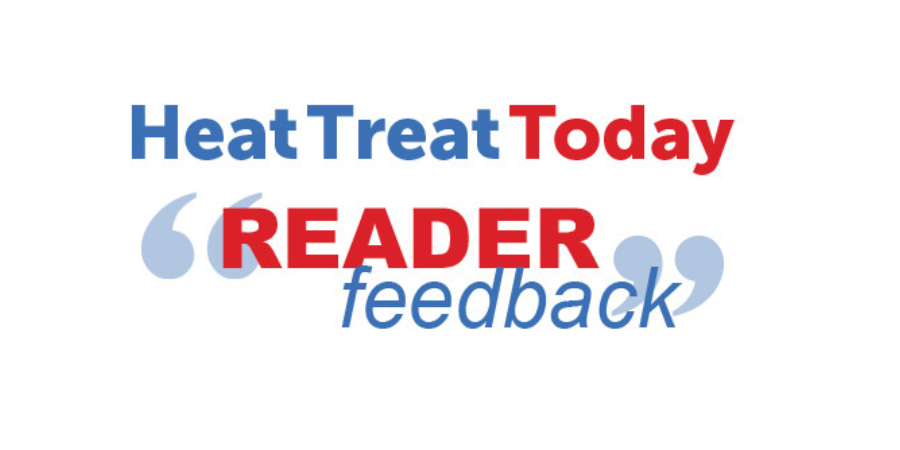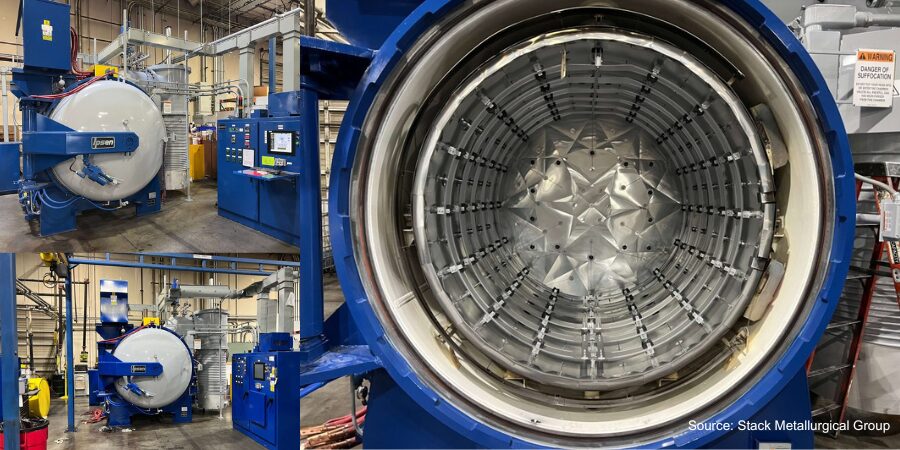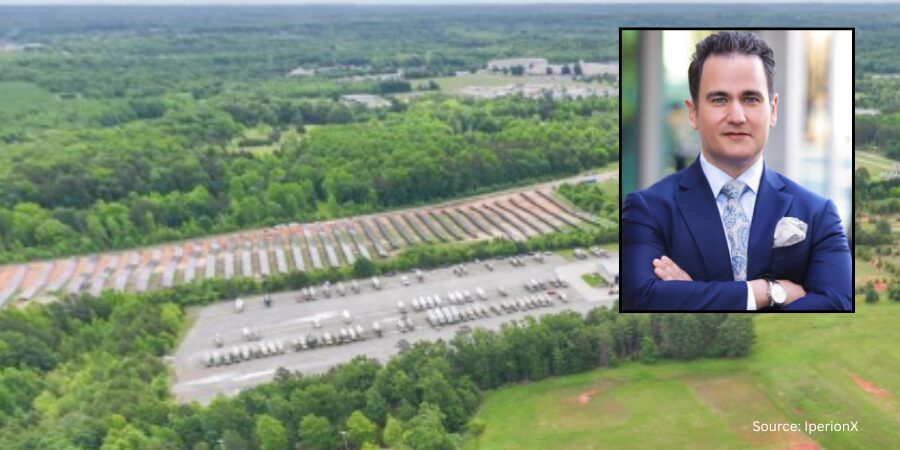Here is what readers are saying about recent posts on Heat Treat Today. Submit your comments to editor@heattreattoday.com.
On Jason Schulze’s article, “AMS2750E: The Importance of Temperature Uniformity” (click here to see original article):
READER QUESTION (from a heat treat supplier across multiple industries): My vacuum furnace uses a type S thermocouple, and there is no access to perform the SAT. Is there an alternative? (We supply to aerospace and must be in accordance with 2750E.)

READER QUESTION: [I] just have two questions, one in regards to SAT and one in regards to TUS.
[Question 1] When SAT testing a lead sensor, let’s just say for the purpose of this example this lead sensor is a type “k” base metal thermocouple, is it acceptable to test this sensor against an SAT sensor which is also type “k”? I see that for resident SAT, the sensor should be of a different type, but for non-resident SAT, is this acceptable?
[Question 2] My other question is in regards to TUS, specifically para 3.5.18 of AMS2750E. I see that in this paragraph two options are addressed. I have a decent understanding of the first requirement, the second option is where I’m getting a bit confused which states ” . . . or if the difference between the measured temperature at the current recording locations and the actual respective hottest and coldest measured areas is less than the SAT tolerance for the applicable furnace class.” How does one calculate this difference?
Jason Schulze for HTT:
[To question 1] As long as the SAT thermocouple is not a resident SAT thermocouple, you are permitted to use the same type (i.e., K, J, T, etc.) as the thermocouple being tested.
[To question 2] I’ll use an example to work the next question. We will assume the furnace is a Class 2 (±3°F SAT difference). Let’s say a previous TUS had a hot location at #5 and it was +6°F. On a new TUS, the location changed to #9 and is now +2°F. The difference between the previous location and the current one is 4°F. This 4°F difference is more than the applicable SAT tolerance of ±3°F, therefore, the location would need to be moved from #5 to #6.
READER REPLY: In regards to the TUS requirement, I’m assuming the actual M.P. Reading(s) from the current hottest and coldest locations don’t get compared to the respective hottest and coldest locations on the TUS report? For example, I have a furnace that’s classified as class 1 (±5) surveyed at 385°F. The TUS report is stating that the lowest T/C location was 382°F T/C 8. I have now exceeded half the maximum temperature uniformity tolerance (2.5°F), therefore I must relocate unless the difference between the “current recording location” and the actual respective coldest location per the TUS is less the SAT tolerance. I was under the impression that as long as the cold location per the report T/C 8 382°F, when compared to the furnace low multipoint reading during the survey – being less than 2°F, it would not require relocation as my “current recording location” when compared to the actual respective cold location is less than the SAT tolerance. My understanding now is that the process control sensors are not used for this difference calculation but rather the TUS sensor representing the low location? I believe that the “current recording location” statement is where I’m getting thrown off a bit.
Jason Schulze:
You are correct in stating that the comparison is made between the previous and current hot or cold (respectively) locations and not the control thermocouple. AMS2750E is not that easy to follow in some instances so any confusion is understandable.
READER QUESTION (from a metals castings provider for aerospace and defense): For 1020°F SAT, if test instrument/thermocouple reads 1015°F and temperature controller reads 1020°F, it is acceptable to program -5°F bias/offset in controller so temp controller reads 1015°F, matching test instrument/thermocouple, correct?
Jason Schulze for HTT:
You are able to utilize offsets to the limits of AMS2750E table 6 or 7 to correct both TUSs and SATs. Instrument calibration is a bit different. AMS2750E does not invoke limitations regarding an offset due to instrument calibration.
Your comment regarding the application of a -5°F offset to correct the SAT would, in fact, be permitted according to AMS2750E. One thing that would be required is, if the SAT failed and that is why the offset is needed, there would need to be an internal corrective action and product impact investigation.






